Powerful conservation tech tools are gathering more data in the field than ever before. But without equally powerful and effective data management and processing tools, that data - no matter how groundbreaking or interesting - will not be able to reach its full potential for impact.
Data management can sometimes seem intimidating to conservationists, especially those just getting started in the world of conservation tech or experimenting with new data collection methods. While every community member's workflow and preferred data management and processing methods may be different, this group can serve as a resource to explore what works for others, share your own advice, and develop new strategies together.
Below are a few WILDLABS events dealing with datasets collected from various conservation tech tools:
Nicole Flores: How do I get started with Wildlife Insights?
Jamie Macaulay: How do I analyse large acoustic datasets using PAMGuard?
Sarah Davidson: Tools for Bio-logging Data in Conservation
Whatever conservation tech tools you work with, and whatever your preferred data management methods, we hope you'll find something helpful and effective in this group when you become a member!
Scaling biodiversity monitoring, using smart sensors and ai-pipelines

- 0 Resources
- 2 Discussions
- 10 Groups
- @ahmedjunaid
- | He/His
Zoologist, Ecologist, Herpetologist, Conservation Biologist





- 63 Resources
- 7 Discussions
- 26 Groups
Max Planck Institute of Animal Behavior
Project leader of MoveApps | Movement ecology

- 1 Resources
- 5 Discussions
- 5 Groups
- @frides238
- | She/her
Hi! I am Frida Ruiz, a current Mechanical Engineering undergraduate student very interested in habitat restoration & conservation. I am excited to connect with others and learn about technology applications within applied ecology & potential research opportunities

- 0 Resources
- 5 Discussions
- 13 Groups
- @Robincrocs
- | He/Him//El//Ele
Wildlife biologist, works with Caimans and Crocodiles
- 0 Resources
- 0 Discussions
- 15 Groups
PhD student at the University of Wuerzburg, working on the influence of climate change on animal migration, especially the Northern Bald Ibis.
- 1 Resources
- 0 Discussions
- 6 Groups
- @StephODonnell
- | She / Her



- 193 Resources
- 676 Discussions
- 32 Groups
Associate Wildlife Biologist M.S. Student



- 2 Resources
- 19 Discussions
- 7 Groups

- 0 Resources
- 7 Discussions
- 7 Groups
I am a conservation technology advisor with New Zealand's Department of Conservation. I have experience in developing remote monitoring tech, sensors, remote comms and data management.
- 0 Resources
- 0 Discussions
- 15 Groups
- @daviana
- | she/her
PhD student at Stanford University studying marine migratory species and human-wildlife interactions through biologging, remote sensing, and participatory science.
- 0 Resources
- 0 Discussions
- 3 Groups
- @erinconnolly
- | She/her
University College London (UCL)
PhD Student at UCL's People and Nature Lab. Studying human-livestock-wildlife coexistence in the Greater Maasai Mara Ecosystem, Kenya.
- 0 Resources
- 0 Discussions
- 8 Groups
How to use geospatial data for rapid analyses of forest carbon projects
5 April 2023
How environmental consultancy Eticwood use geospatial data for rapid forest carbon project assessments
24 March 2023
When do you use a bar chart over a line chart? What are area charts good for? What's wrong with pie charts? Learn about how these different types of data visualization work, and how they're used, in Observable's first...
21 March 2023
The Innovation in Practice edition of Methods in Ecology and Evolution is still seeking proposals about conservation technology
6 March 2023
Last week's Variety Hour is now up on youtube. It was a great session - we covered Moveapps, an awesome community project building marine biologgers, chatgpt and google earth engine vs microsoft's planetary computer....
3 March 2023
Article
Rainforest Connection (RFCx) is bringing back the Arbimon newsletter for 2023! We're excited to share new features and tools of the platform, what's coming up, and some insights into our projects on bioacoustic...
23 February 2023
WeForest is looking for a consultant(s) to identify the best tool(s) and/or program(s) to standardize M&E data collection and management across all our Forest Landscape Restoration projects, globally. Will you...
21 February 2023
Researchers and conservationists are embarking on a bold initiative to save the world's most trafficked wild mammal — the pangolin
16 February 2023
Technology to End the Sixth Mass Extinction. Salary: $104k-144K; Location: Washington DC or Seattle WA, potential hybrid; 5+ years of Full stack development experience; Deadline March 15th - view post for full job...
10 February 2023
Individuals and teams developing open data innovations for biodiversity can submit them between now and 22 August for a chance to share up to €20,000 in this annual incentive competition.
10 February 2023
Consultancy opportunity at ZSL for an experienced monitoring specialist to support species monitoring in rewilding landscapes across Europe
31 January 2023
Careers
Join the Arribada Initiative! We have a unique opportunity for a software developer to create mobile / desktop applications and intuitive user interfaces that assist researchers and fieldworkers to conserve wildlife.
16 January 2023
June 2025
event
event
event
October 2025
event
event
November 2025
March 2025
February 2025
event
event
85 Products
Recently updated products
| Description | Activity | Replies | Groups | Updated |
|---|---|---|---|---|
| Hi Sol,If the maximum depth is 30m, it would be worth experimenting with HydroMoth in this application especially if the deployment time is short. As Matt says, the air-filed case... |
|
Acoustics, AI for Conservation, Data management and processing tools, Emerging Tech, Sustainable Fishing Challenges | 1 year ago | |
| Congratulations! My first hydromoth was just arrived yesterday and so excited! Looking forward for the update from your project!!! |
|
Acoustics, Animal Movement, Climate Change, Conservation Tech Training and Education, Data management and processing tools, Emerging Tech, Open Source Solutions, Protected Area Management Tools, Sensors, Software Development, Latin America Community | 1 year ago | |
| Thanks, and that's a match! All these pictures are from a lab experiment and formated with AmphIdent. We took weekly belly pictures of several larvae. The aim of this google... |
|
Camera Traps, Data management and processing tools, Software Development | 1 year 1 month ago | |
| Can't beat Dan's list! I would just add that if you're interested in broader protected area management, platforms like EarthRanger and SMART are amazing, and can integrate... |
|
Data management and processing tools, Camera Traps, Conservation Tech Training and Education | 1 year 1 month ago | |
| First things first, our team — @jcguerra10 , @bmgarrido , and special acknowledgment to @Mantolehmann, who joined... |
|
Build Your Own Data Logger Community, Data management and processing tools, Sensors | 1 year 1 month ago | |
| This thread is off-topic in this conversation, so happy to continue it in the other one. However, just noting - your system is one example, but not the only one - there are... |
|
Human-Wildlife Conflict, Data management and processing tools | 1 year 1 month ago | |
| Thank you Carly, I will definitely take a look. |
|
Acoustics, Animal Movement, Climate Change, Conservation Tech Training and Education, Data management and processing tools, Geospatial, Software Development | 1 year 2 months ago | |
| Hello Friends,Its amazing to see the growing number of organisations working in biodiversity conservation.Biodiversity stories can have a... |
|
Data management and processing tools, Software Development | 1 year 2 months ago | |
| Were you ever able to solve the problem? Interestingly enough, I begin a seal bio-logging study next year! Also, you are correct. The errors were occurring during short bout... |
|
Data management and processing tools | 1 year 2 months ago | |
| Thank you! This is encouraging. It's also nice to know that Saul is approachable for problem-solving issues. |
|
Data management and processing tools | 1 year 3 months ago | |
| Am working on similar AI challenge at the moment. Hoping to translate my workflow to wolves in future if needed. We all are little overstretched but it there is no pressing... |
|
Camera Traps, AI for Conservation, Build Your Own Data Logger Community, Data management and processing tools, Marine Conservation, Protected Area Management Tools, Geospatial | 1 year 3 months ago | |
| Hello WILDLABS Community!I work on the development of the hardware for networks of fixed radio receivers that are used to detect... |
|
Data management and processing tools | 1 year 3 months ago |
The 100KB Challenge!
7 February 2025 11:47am
20 February 2025 9:13am
~500mA peak current, it has a similar power profile as the current RockBLOCK product, in that it needs lots of juice for a for a small period of time (to undertake the transmission) we include onboard circuitry to help smooth this over. I'll be able to share more details on this once the product is officially launched!
20 February 2025 9:31am
Hi Dan,
Not right now but I can envision many uses. A key problem in RS is data streams for validation and training of ML models, its really not yet a solved problem. Any kind of system that is about deploying and "forgetting" as it collects data and streams it is a good opportunity.
If you want we can have a talk so you tell me about what you developed and I'll see if it fits future projects.
All the best
INTERNSHIP FOR COMPUTER VISION BASED INSECT DETECTION AND CLASSIFICATION
25 February 2025 10:46am
Camera Trap Data Visualization Open Question
4 February 2025 3:00pm
12 February 2025 12:31pm
Hey Ed!
Great to see you here and thanks a lot for your thorough answer.
We will be checking out Trapper for sure - cc @Jeremy_ ! A standardized data exchange format like Camtrap DP makes a lot of sense and we have it in mind to build the first prototypes.
Our main requirements are the following:
- Integrate with the camtrap ecosystem (via standardized data formats)
- Make it easy to run for non technical users (most likely an Electron application that can work cross OSes).
- Make it useful to explore camtrap data and generate reports
In the first prototyping stage, it is useful for us to keep it lean while keeping in mind the interface (data exchange format) so that we can move fast.
Regards,
Arthur
12 February 2025 1:36pm
Quick question on this topic to take advantage of those that know a lot about it already. So once you have extracted all your camera data and are going through the AI object detection phase which identifies the animal types. What file formation that contains all of the time + location + labels in the photos data do the most people consider the most useful ? I'm imagining that it's some format that is used by the most expressive visualization software around I suppose. Is this correct ?
A quick look at the trapper format suggested to me that it's meta data from the camera traps and thus perform the AI matching phase. But it was a quick look, maybe it's something else ? Is the trapper format also for holding the labelled results ? (I might actually the asking the same question as the person that started this thread but in different words).
12 February 2025 2:04pm
Another question. Right now pretty much all camera traps trigger on either PIR sensors or small AI models. Small AI models would tend to have a limitation that they would only accurately detect animal types and recognise them at close distances where the animal is very large and I have question marks as to whether small models even in these circumstances are not going to make a lot of classification errors (I expect that they do and they are simply sorted out back at the office so to speak). PIR sensors would typically only see animals within say 6m - 10m distance. Maybe an elephant could be detected a bit further. Small animals only even closer.
But what about when camera traps can reliably see and recognise objects across a whole field, perhaps hundreds of meters?
Then in principle you don't have to deploy as many traps for a start. But I would expect you would need a different approach to how you want to report this and then visualize it as the co-ordinates of the trap itself is not going to give you much information. We would be in a situation to potentially have much more accurate and rich biodiversity information.
Maybe it's even possible to determine to a greater degree of accuracy where several different animals from the same camera trap image are spatially located, by knowing the 3D layout of what the camera can see and the location and size of the animal.
I expect that current camera trap data formats may fall short of being able to express that information in a sufficiently useful way, considering the in principle more information available and it could be multiple co-ordinates per species for each image that needs to be registered.
I'm likely going to be confronted with this soon as the systems I build use state of the art large number of parameter models that can see species types over much greater distances. I showed in a recent discussion here, detection of a polar bear at a distance between 130-150m.
Right now I would say it's an unknown as to how much more information about species we will be able to gather with this approach as the images were not being triggered in this manner till now. Maybe it's far greater than we would expect ? We have no idea right now.
Paper: Technology's social and structural effects in environmental organizations
10 February 2025 6:00am
Collecting interesting resources to visualise spatio-temporal data from wildlife observations
9 February 2025 12:21pm
🌍 explorer.land Beginners Webinar: Create your first project and funding opportunity
6 February 2025 1:05pm
Machine learning for bird pollination syndromes
25 November 2024 7:30am
3 January 2025 3:55am
Hi @craigg, my background is machine learning and deep neural networks, and I'm also actively involved with developing global geospatial ecological models, which I believe could be very useful for your PhD studies.
First of all to your direct challenges, I think there will be many different approaches, which could serve more or less of your interests.
As one idea that came up, I think it will be possible in the coming months, through a collaboration, to "fine-tune" a general purpose "foundation model" for ecology that I'm developing with University of Florida and Stanford University researchers. More here.
You may also find the 1+ million plant trait inferences searchable by native plant habitats at Ecodash.ai to be useful. A collaborator at Stanford actually is from South Africa, and I was just about to send him this e.g. https://ecodash.ai/geo/za/06/johannesburg
I'm happy to chat about this, just reach out! I think there could also be a big publication in Nature (or something nice) by mid-2025, with dozens of researchers demonstrating a large number of applications of the general AI techniques I linked to above.
6 February 2025 9:57am
We are putting together a special issue in the journal Ostrich: Journal of African Ornithology and are welcoming (review) papers on the use of AI in bird research. https://www.nisc.co.za/news/202/journals/call-for-papers-special-issue-on-ai-and-ornithology
Giving different types of labeled data to the community - solutions?
5 February 2025 4:19pm
Free/open-source app for field data collection
6 December 2024 2:04pm
4 February 2025 3:52pm
Awesome, thank you!
4 February 2025 3:57pm
Thanks! Essentially field technicians, students, researchers etc. go out into the field and find one of our study groups and from early in the morning until evening the researchers record the behaviour of individual animals at short intervals (e.g., their individual traits like age-sex class, ID, what the animal is doing, how many conspecifics it has within a certain radius, what kind of food the animal is eating if it happens to be foraging). Right now in our system things work well but we are using an app that is somewhat expensive so we want to move towards open-source
4 February 2025 4:26pm
Thanks! I am familiar with EarthRanger but wasn't aware it could be used for behavioural data collection
Technical Assistant (m/f/d) | Moveapps
4 February 2025 8:32am
Webinar: Wildlife Drones’ Dragonfly – Revolutionizing VHF Tracking Technology
3 February 2025 4:31am
Deliver stronger VM0047-aligned Nature-Based Solutions
31 January 2025 9:30am
The Minor Foundation for Major Challenges calls for "new and unexpected ways of communicating the need for transitioning to a low-carbon economy"
29 January 2025 9:23pm
Accessing the Global Register of Introduced and Invasive Species (GRIIS)
25 January 2025 4:39pm
Nature Tech Unconference
Living Data 2025
16 January 2025 6:30pm
Webinar: Drone-based VHF tracking for Wildlife Research and Management
9 January 2025 11:45pm
Which LLMs are most valuable for coding/debugging?
25 September 2024 5:48pm
4 October 2024 7:53pm
Thanks, Lampros!
29 October 2024 11:10am
When it comes to coding and debugging, several large language models (LLMs) stand out for their value. Here are a few of the most valuable LLMs for these tasks:
1. OpenAI's Codex: This model is specifically trained for programming tasks, making it excellent for generating code snippets, suggesting improvements, and even debugging existing code. It powers tools like GitHub Copilot, which developers find immensely helpful.
2. Google's PaLM: Known for its versatility, PaLM excels in understanding complex queries, making it suitable for coding-related tasks as well. Its ability to generate and refine code snippets is particularly useful for developers.
3. Meta's LLaMA: This model is designed to be adaptable and can be fine-tuned for specific coding tasks. Its open-source nature allows developers to customize it according to their needs, making it a flexible option for coding and debugging.
4. Mistral: Another emerging model that shows promise in various tasks, including programming. It’s being recognized for its capabilities in generating and understanding code.
These LLMs are gaining traction not just for their coding capabilities but also for their potential to streamline the debugging process, saving developers time and effort. If you want to dive deeper into the features and strengths of these models, you can check out the full article here: Best Open Source Large Language Models LLMs
9 January 2025 8:51pm
thanks kristy! super helpful list.
Video evidence for the evaluation of behavioral state predictions
17 December 2024 11:02am
19 December 2024 11:53am
Currently, the main focus is visual footage as we don't render audio data in the same way as we do for acceleration (also: the highly different frequencies can be hard to show sensibly side by side).
But In this sense, yes, the new module features 'quick adjust knobs' for time shifts: you can roll-over a timestamp and use a combination of shift/control and mouse-wheel to adjust the offset of the video by 1/10/60 seconds or simply enter the target timestamp manually down to the millisecond level. This work can then and also be saved in a custom mapping file to continue synchronisation work later on.
19 December 2024 12:59pm
but no "time scaling" adjustments to adjust a too "slow" or too "fast" video ?
19 December 2024 4:07pm
No, not yet. The player we attached does support slower/faster replay up to a certain precision, but I'm not sure that this will be sufficiently precise for the kind of offsets we are talking about. Adding an option on the frontend to adjust this is quite easy, but understanding the impact of this on internal timestamp handling will add a level of complexity that we need to experiment with first.
As you said, for a reliable estimate on this kind of drift we need at least 2 distinct synchronized markers with sufficient distance to each other, e.g. a precise start timestamp and some recognizable point event later on.
I perfectly agree that providing an easy-to-use solution does make perfect sense. We'll definitely see into this.
Announcement of Project SPARROW
18 December 2024 8:01pm
3 January 2025 6:48pm
Firetail 13 - now available
10 December 2024 10:55am
13 December 2024 3:31am
Thank you so much for looking into this issue quickly! Much appreciated.
17 December 2024 10:40am
I promised to keep you updated, and the article is now available here:
17 December 2024 10:42am
and a short contribution in this e-obs setup, where we used Firetail VideoSync to analyze motion-triggered camera footage:
Detecting Thrips and Larger Insects Together
16 December 2024 1:14pm
16 December 2024 2:32pm
16 December 2024 2:36pm
Yeah, I would expect that you might need to have higher resolution if the critters are very small. Still might be just a lens choice. But not up on this amount of lens difference, so don't know how hard it would be.
16 December 2024 2:48pm
So, updated the text a bit with images cropped at 100% zoom :) we are already happy with the time reductions we got, but... would like to get at least 90% time reduction instead of 70% :))) we know that with a very expensive and high power camera we could probably do it, so one approach we are thinking of is just taking a closer macro picture with a cellphone of let's say 1/3 or 1/4 of the sticky paper and use this data instead of everything... or take 2-3 pictures (but we don't want to waste time in sticking the images together).
AI Researcher / Doctoral Candidate
11 December 2024 1:45pm
Mirror images - to annotate or not?
5 December 2024 8:32pm
7 December 2024 3:18pm
I will send you a DM on LinkedIn and try to find a time to chat
8 December 2024 12:36pm
I made a few rotation experiements with MD5b.
Here is the original image (1152x2048) :
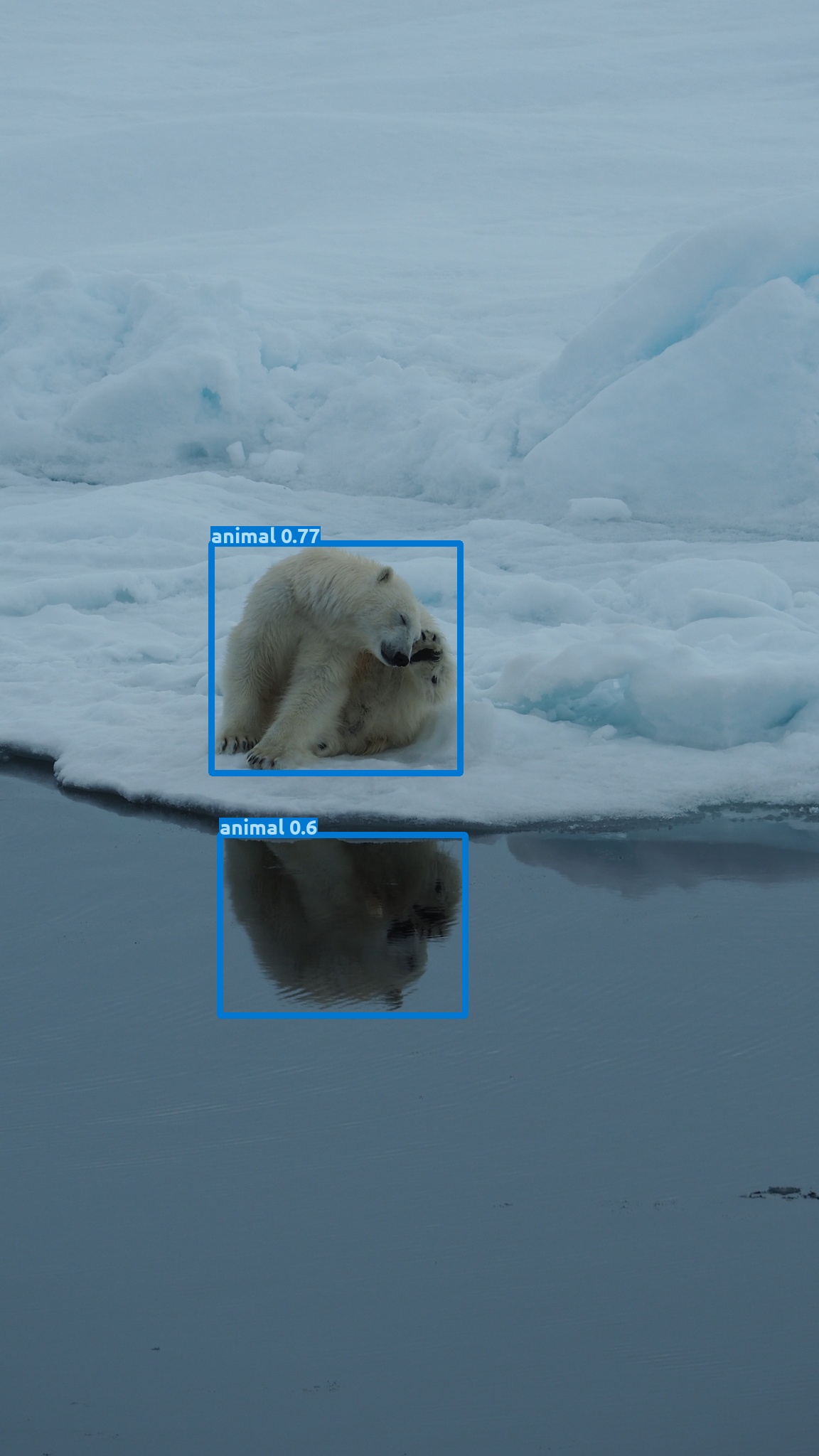
When saving this as copy in photoshop, the confidence on the mirror image changes slightly:

and when just cropping to a (1152*1152) square it changes quite a bit:
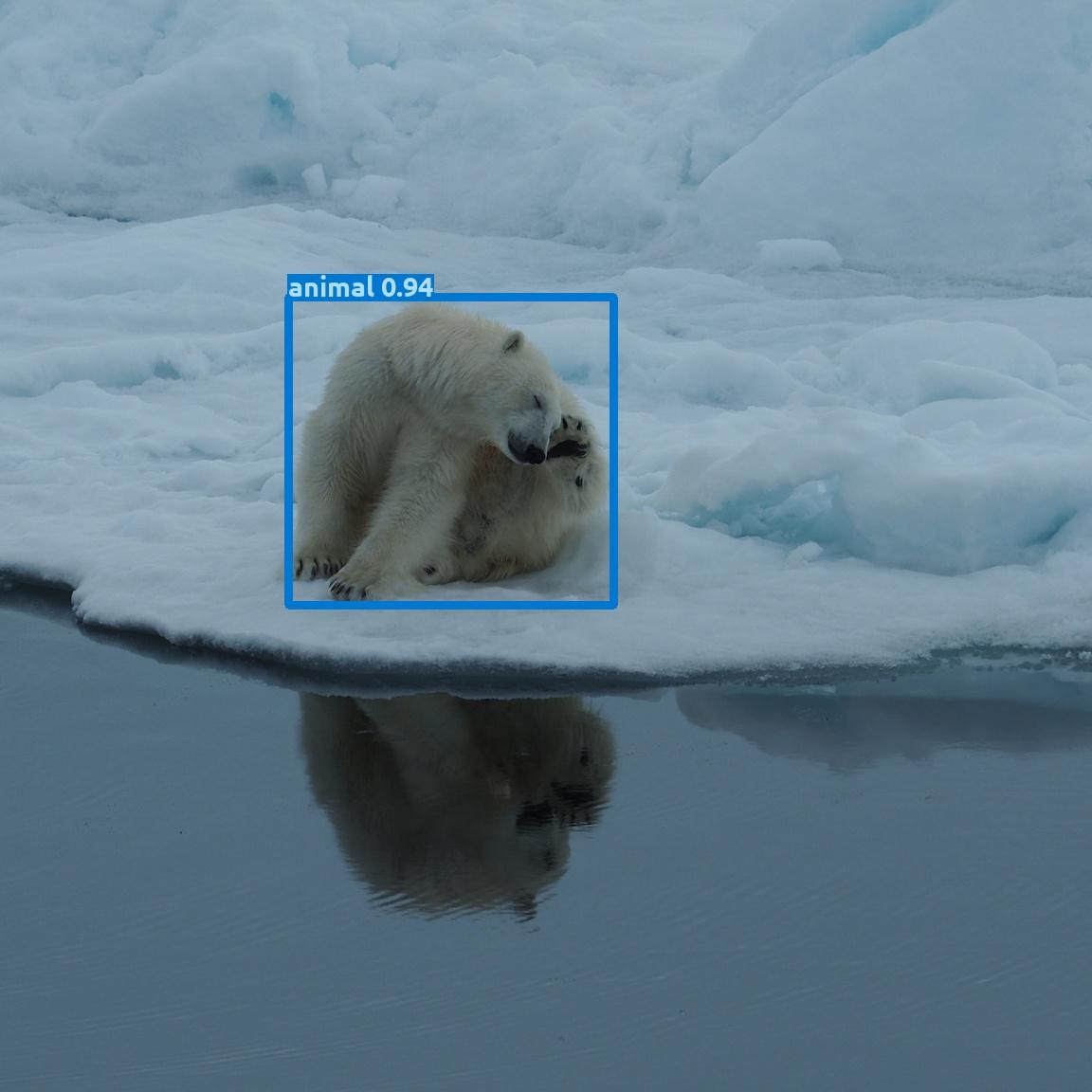
The mirror image confidence drops below my chosen threshold of 0.2 but the non-mirrored image now gets a confidence boost.
Something must be going on with overall scaling under the hood in MD as the targets here have the exact same number of pixels.
I tried resizing to 640x640:
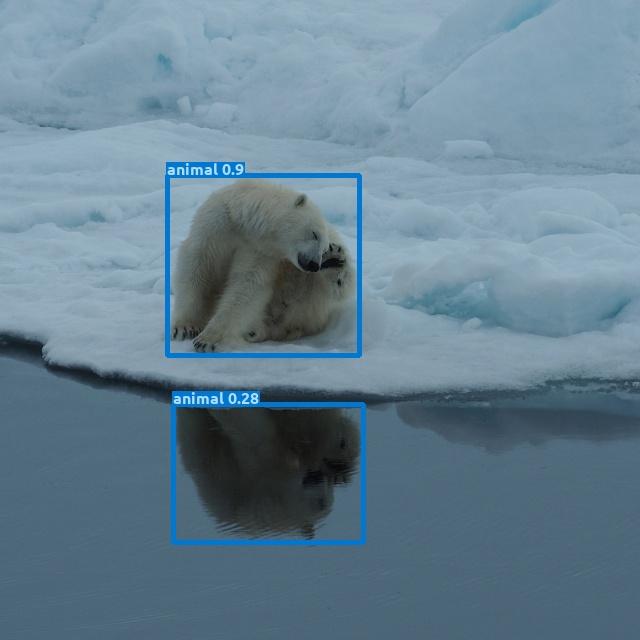
This bumped the mirror image confidence back over 0.2... but lowered the non-mirrored confidence a bit... huh!?
My original hypothesis was that the confidence could be somewhat swapped just by turning the image upside down (180 degree rotation):
Here is the 1152x1152 crop rotated 180 degrees:
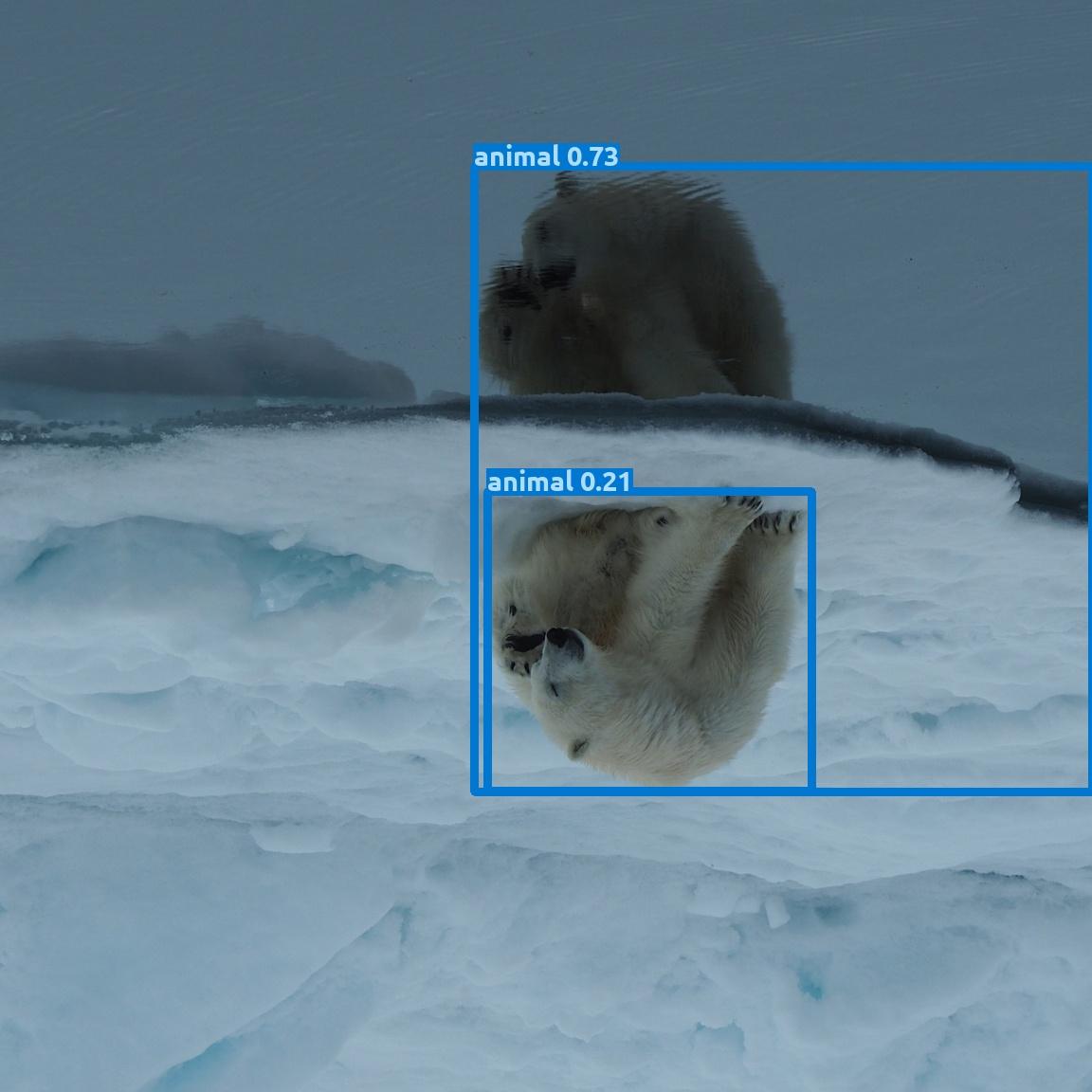
The mirror part now got a higher confidence but it is interpreted as sub-part of a larger organism. The non-mirrored polar bear had a drop in confidence.
So my hypothesis was somewhat confirmed...
This leads me to believe that MD is not trained on many upside down animals ....
- and probably our PolarbearWatchdog! should not be either ... ;)
9 December 2024 4:27pm
Seems like we should include some rotations in our image augmentations as the real world can be seen a bit tilted - as this cropped corner view from our fisheye at the zoo shows.
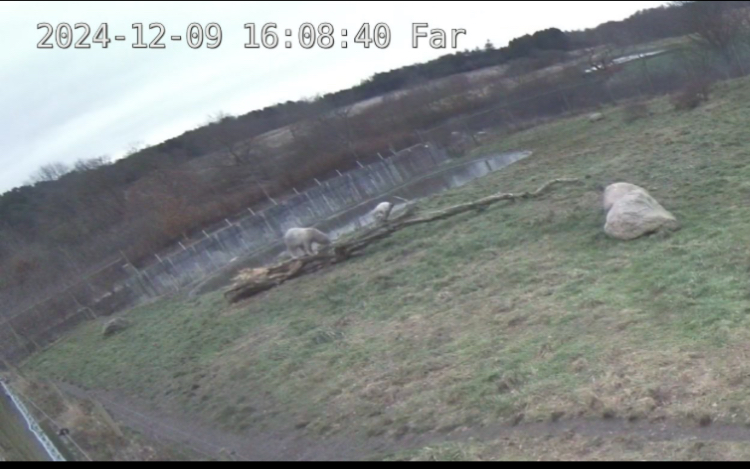
Fauna & Flora SMART Competences Consultancy
4 December 2024 2:21pm
Conservation Data Strategist?
20 November 2024 3:50pm
22 November 2024 2:28pm
Great resources being shared! Darwin Core is a commonly used bio-data standard as well.
For bioacoustic data, there are some metadata standards (GUANO is used by pretty much all the terrestrial ARU manufacturers). Some use Tethys as well.
Recordings are typically recorded as .WAV files but many store them as .flac (a type of lossless compression) to save on space.
For ethics, usually acoustic data platforms with a public-facing component (e.g., Arbimon, WildTrax, etc.) will mask presence/absence geographical data for species listed on the IUCN RedList, CITES, etc. so that you're not giving away geographical information on where a species is to someone who would use it to go hunt them for example.
29 November 2024 12:13pm
Hello, I am experienced in conservation data strategy. If you want to have a conversation you can reach me at SustainNorth@gmail.com.
29 November 2024 5:51pm
Bird Monitoring Data Exchange is a standard often used for birds data.
Recovery Ecology Post Doctoral Associate - San Diego Zoo Wildlife Alliance
26 November 2024 11:47pm







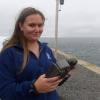

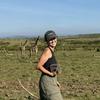





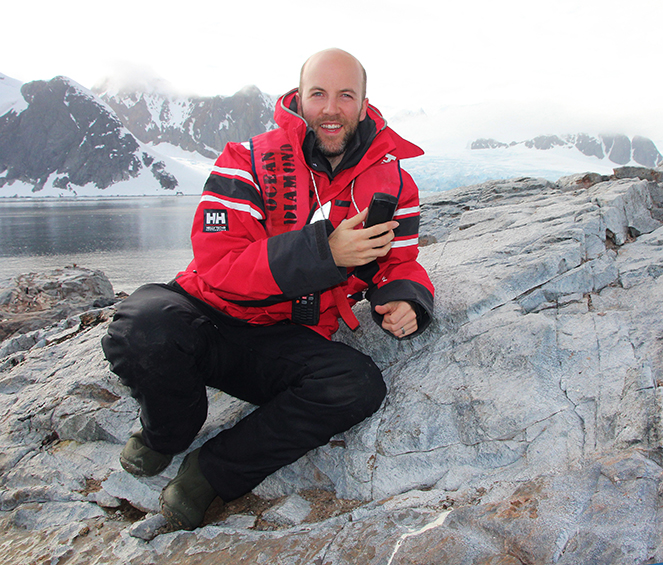







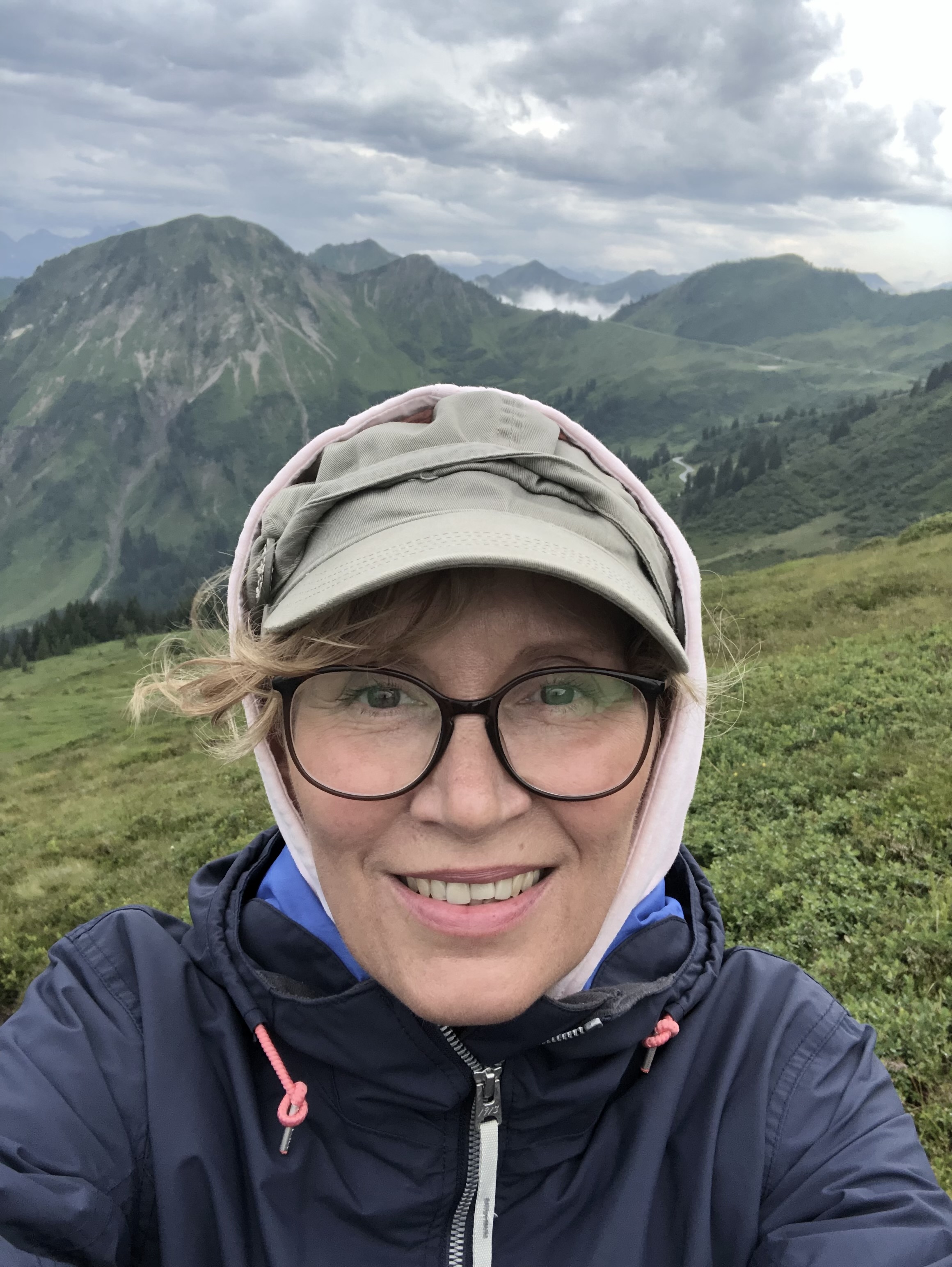
















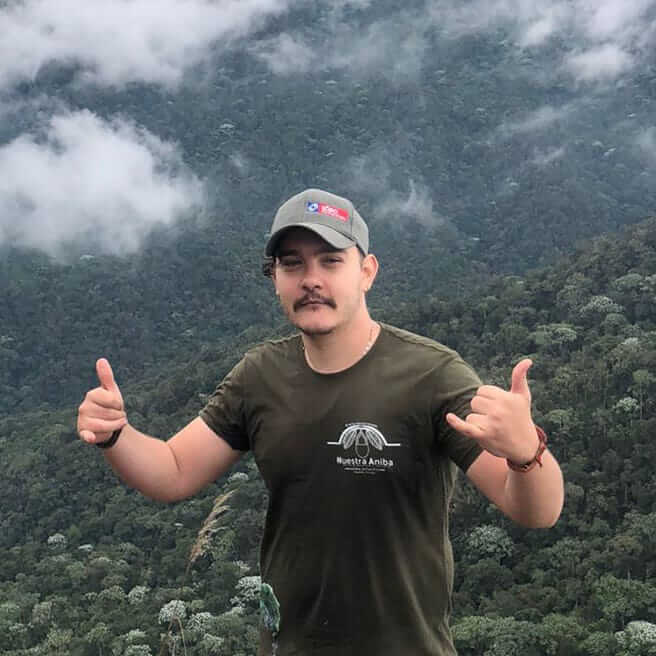











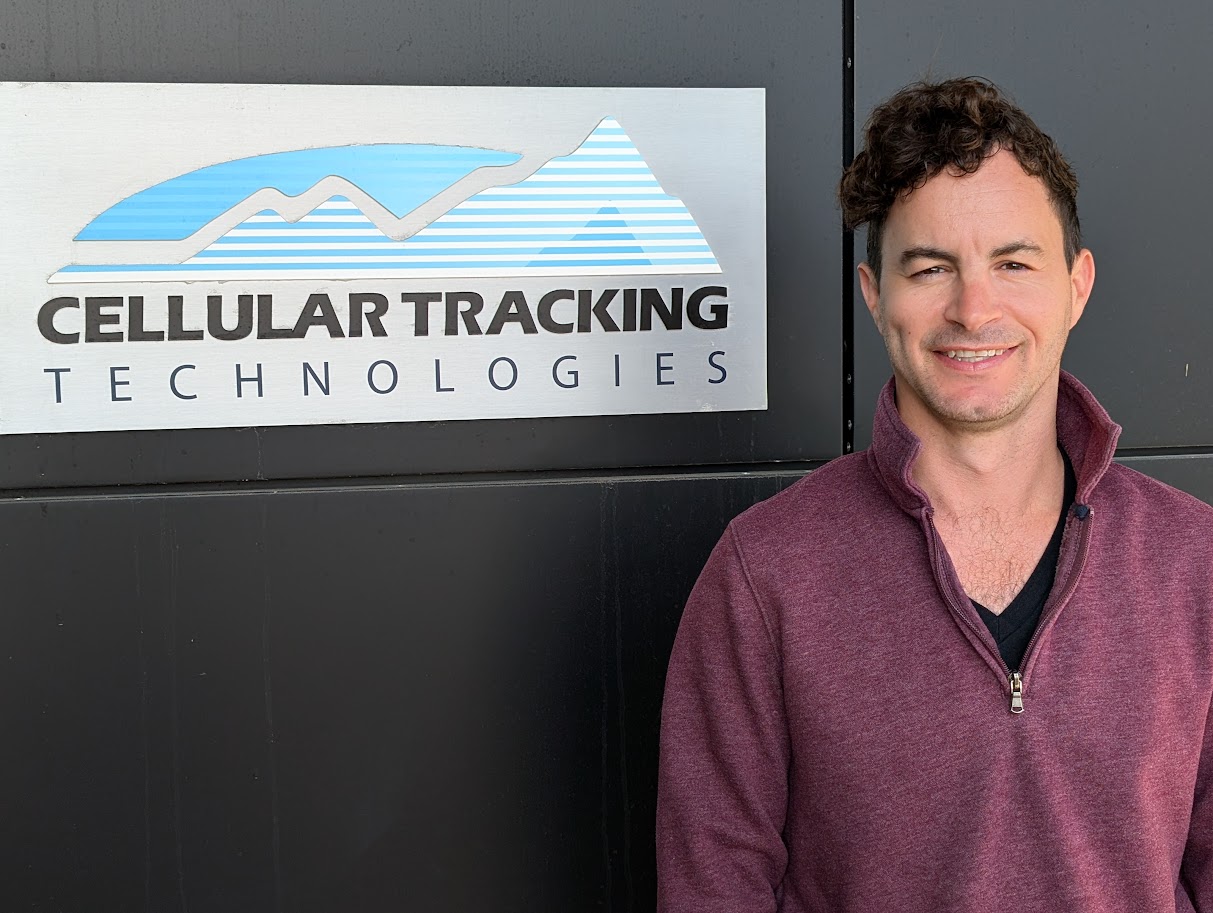


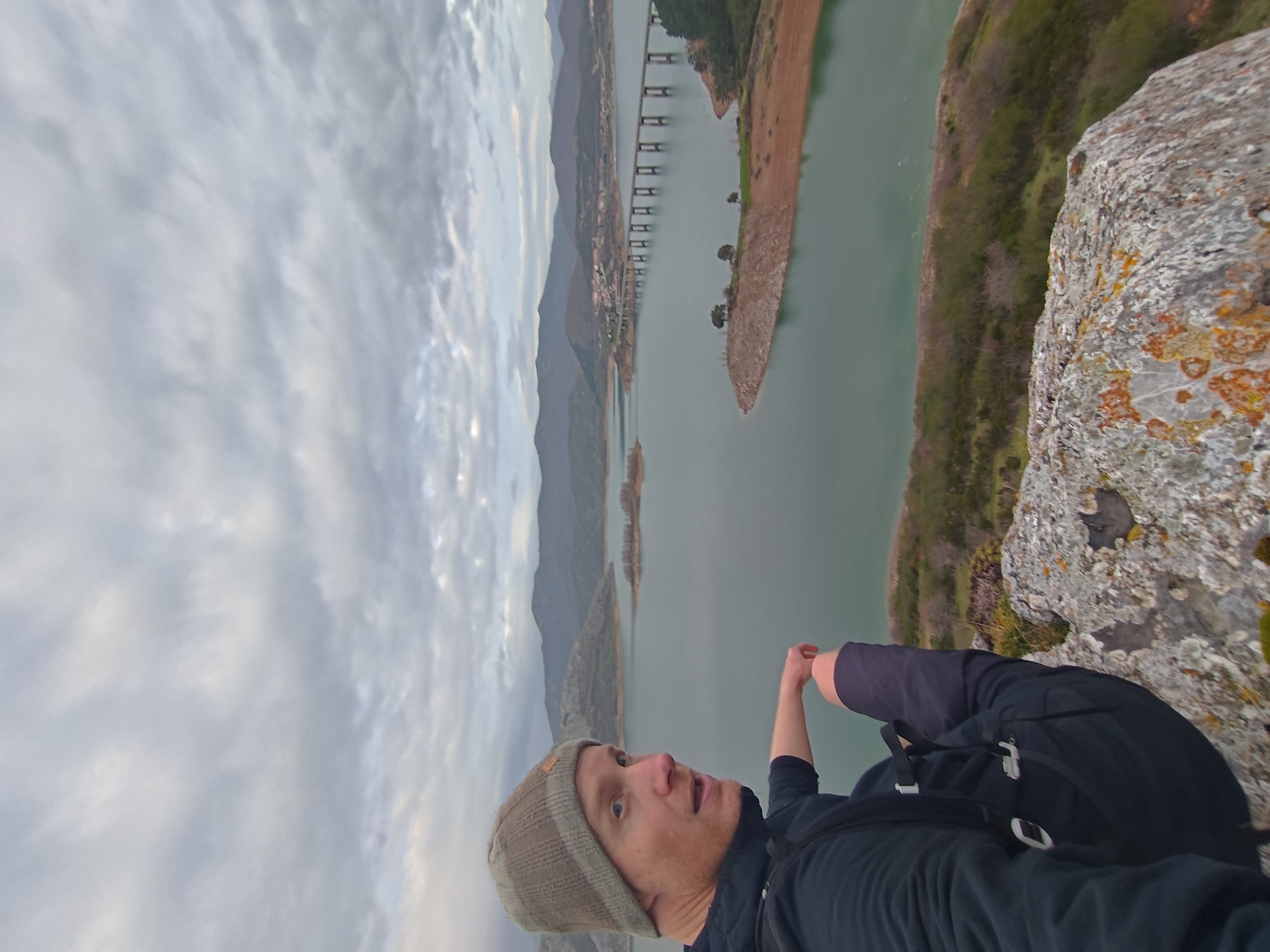









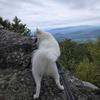

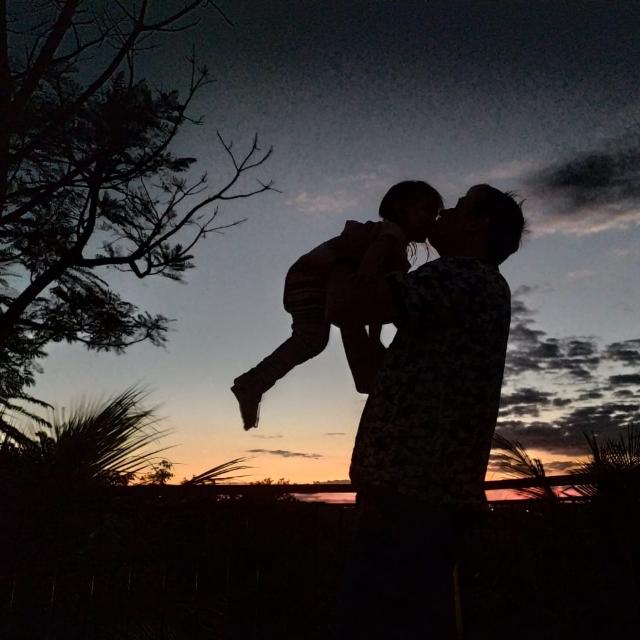






20 February 2025 9:13am
Nice one - what kind of thing would you use this for?
~500mA peak current, it has a similar power profile as the current RockBLOCK product, in that it needs lots of juice for a for a small period of time (to undertake the transmission) we include onboard circuitry to help smooth this over. I'll be able to share more details on this once the product is officially launched!